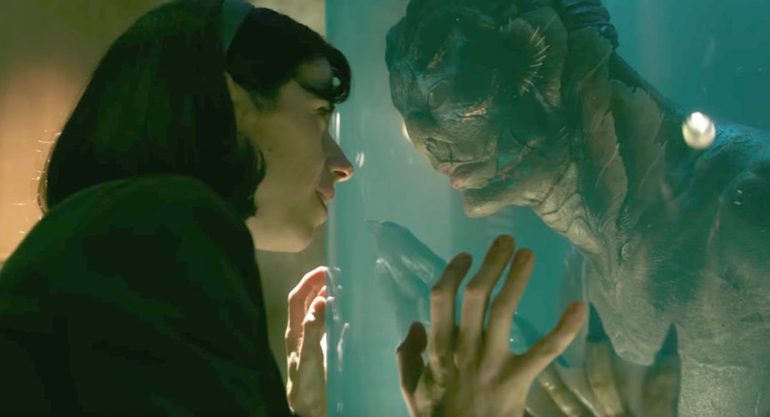On paper, “The Shape of Water” sounds like a chaotic and inexplicable fever dream: a woman (Sally Hawkins) who is unable to speak and who works nights cleaning a Cold War-era government facility falls in love with the amphibious creature (played by del Toro golden boy Doug Jones) kept there and helps him to escape.
Once director Guillermo del Toro’s name comes up, however, the vision clicks into place. Describing his latest film as an “adult fairy tale for troubled times,” del Toro has created a masterpiece that feels both like an amalgamation and an improvement of almost all he’s done in the past fifteen years. The film is rife with del Toro’s own trademarks—the rich and colorful sets are reminiscent of those seen in “Crimson Peak” and “Hellboy,” the fairytale elements and opening voiceover a follow up to “Pan’s Labyrinth,” and the specific brand of blunt, sparse, but shocking violence is drawn from all of the above. This is del Toro’s strongest film in over a decade, which is saying something for a man who has yet to fail.
At the forefront of the film is Hawkins’ performance as Elisa and the beauty of the character’s story. Elisa was found as an infant in the water of a riverbank. She originated in the water and through her love for the Amphibian Man, she returns to it. She needs the water in order to survive perhaps as much as he does. As for Hawkins, the voiceover in the first scene refers to Elisa as “the princess without voice,” but it should be noted that she need not speak a single word in order to convey everything that words would. Hawkins’ performance is impeccable, allowing the audience to feel as though they know what’s going on her head and heart without her ever having to say it out loud.
“The Shape of Water” brings those on the margins straight into the center of the story. As neither of the leads actually speak, much of the dialogue comes from Zelda (Octavia Spencer) and Giles (Richard Jenkins), a black woman and a closeted gay man. The foremost villain, Strickland (Michael Shannon), is by no mistake an aggressively straight white man with misogynistic, racist, and xenophobic tendencies at the core of his character. The film actively acts as a direct foil to the Cold War-era movies that inspired it. Had “The Shape of Water” been made in 1962, when it is set, Strickland would likely have been the hero. Del Toro has subverted what audiences are used to seeing in a beautiful way—a Cold War film in which the Russian double-agent is the character to root for and the All-American father-of-two is a deeply disturbed villain. The film is set in a time period before black Americans could vote in this country and when homosexuality was still a DSM diagnosis, but a black woman and a gay man share the majority of the dialogue. It’s a monster movie where the creature of mysterious origin gets the girl. On top of this, the Amphibian Man fully embodies “the other” that was such a striking and horrific thought in this time period and that Americans still struggle with today. Del Toro embraces this, however—it is exactly his otherness that makes him so beautiful and so dear to Elisa, and it is what makes him different that necessitates that he be saved.
Elisa can’t speak, but she can sing. In a musical sequence, she sings her feelings for her amphibious lover. The lights go dark, the color fades to black and white, and suddenly she is dressed in a gown and on an old Hollywood stage, singing without speaking and dancing through it all. In this way, “The Shape of Water” mirrors its protagonist—it plays like live theater, moves like a meticulously choreographed dance, and above all, it does not speak. It sings.
***“The Shape of Water” was released on Dec. 1, 2017. It was directed by Guillermo del Toro and stars Doug Jones, Sally Hawkins, Octavia Spencer, Michael Shannon, and Richard Jenkins. “The Shape of Water” is rated R.
This article originally appeared in the print edition of our January 2018, issue.





